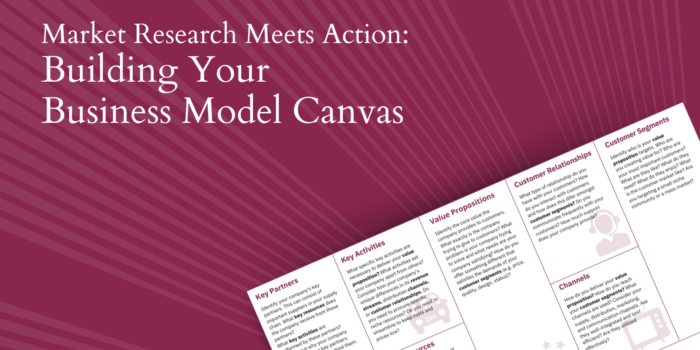The re-emerging narrative of machines vs humans in the purview of modern AI chatbots and advancements in machine learning technologies is readily finding less ground as insights into collaborative intelligence emerge. It is increasingly becoming evident that attitudes towards collaborative intelligence are set to carve the trajectory of businesses in the years to come.
As technology continues to evolve, it is becoming increasingly evident that businesses investing in AI and fostering machine-human collaboration are set to reap substantial rewards. Recent studies suggest that businesses investing in AI and machine-human collaboration at a pace as that of top-performing companies can anticipate a revenue boost of nearly 40% and a rise in employment levels by 10%. With the trend of slashing the workforce in enterprises around the world amidst growing technology advancements to substitute, the point that such companies are deemed for just short-term productivity gains often slips out.
This was instated in a 2018 Harvard Business Review research, involving 1,500 firms in a range of industries, which showed that it is the fine amalgamation of the human workforce and cutting-edge technology that can position for true long-term, sustainable growth. This holds for the current levels of technological prowess that are being experienced, too. An astounding 60% of organizational leaders recognize the critical role of machine-human collaboration in achieving their strategic priorities.
As we delve deeper into the era of collaborative intelligence, it is crucial to recognize that certain areas within businesses can be completely substituted by technology, leading to remarkably improved outcomes. Embracing these technological advancements can streamline operations, enhance efficiency, and drive innovation.
This not only will allow optimized business operations but also free the employees for more strategic piloting and supervision roles. Exemplifying this is the use of a virtual assistant called Aida by a major Swedish Bank, SEB. Powered by advanced natural-language processing capabilities, Aida has access to extensive data repositories, enabling her to efficiently respond to numerous frequently asked questions, ranging from opening accounts to facilitating cross-border payments. Whenever the system can’t resolve an issue—which happens in about 30% of cases—it turns the caller over to a human customer service representative. Notably, this interaction serves a dual purpose – it offers immediate assistance to the customer and provides valuable data for Aida’s continuous improvement.
By entrusting Aida with routine tasks and basic requests, SEB’s human customer-service representatives are liberated to focus on more complex issues that require their expertise. Particularly when dealing with dissatisfied callers in need of additional support, these human representatives can offer empathetic and nuanced solutions, ensuring an exceptional customer experience, thus reaping immense benefits for the bank’s growth.

The Inevitable Role of Skilled Talent
In today’s rapidly evolving business landscape, the integration of AI chatbots and other intelligent agents has revolutionized marketing and advertising efforts. However, contrary to the notion of machines replacing human talent, it is the skilled workforce that plays an inevitable role in harnessing the true potential of these technologies.
While AI chatbots are excellent at interacting with consumers and processing massive quantities of data, they heavily rely on human knowledge for building language models, specifying necessary outputs, and making sure that ethical content standards are followed. Human oversight is critical to prevent biases, misinformation, or inappropriate content from proliferating across digital channels.
The Need for Collaborative Intelligence
Successfully integrating human workers with machines and AI can have significant advantages for many elements of corporate operations across industries.
Enhanced Efficiency and Productivity:
When humans collaborate with AI-powered machines, the combination of human creativity, problem-solving, and emotional intelligence complements the speed and accuracy of machines. This synergy can result in higher efficiency, simpler workflows, and increased production, eventually driving business operations success. Unilever is an outstanding example of this, having introduced an AI-based hiring system, which resulted in a tremendous rise in job candidates, doubling the pool to 30,000 while simultaneously reducing hiring time from four months to four weeks.
Data-Driven Decision Making:
When combined with the skills of human expertise, AI’s ability to process massive amounts of data can enable enhanced decision-making, allowing businesses to make smarter choices that are not only carved by human expertise but essentially backed by recurring data patterns, giving it an edge in factual accuracy. Fruitful collaboration can also provide actionable insights for developing effective competitive strategies by closely monitoring gaps and assisting in overall performance optimization. For example, General Electric collects and analyzes operating data from turbines using “digital twins,” AI-enabled virtual replicas of physical equipment. The Predix application, enabled by AI, forecasts possible equipment failures, allowing maintenance workers to make informed decisions and avoid costly shutdowns.
Improved Customer Experiences:
The capacity of AI-powered systems to evaluate consumer data, such as preferences, purchase journeys, and behaviors, combined with empathy and human touch in customer contacts can lead to improved customer experiences and increased customer loyalty. The effectiveness of the strategy is further amplified by positioning businesses to offer greater value and seamless personalization to their
Innovation and Creativity:
AI can help humans automate routine work, freeing up important time for employees to focus on more inventive and creative projects. As a result, a culture of innovation can be fostered, encouraging employees to experiment with new ideas and devise unique solutions to complicated problems.
Accelerated Problem Solving:
While computers are great at analyzing data and finding patterns, people are better at critical thought and intuition. Leveraging both capabilities complemented with each other can help firms solve problems more effectively and proactively by accelerating problem-solving processes. For example, when Mercedes-Benz experienced issues due to rigid manufacturing processes and restrictions in meeting the increased demand for individualized S-class cars, they merged AI-enabled cobots with human workers at their plants. These cobots serve as extensions of workers, allowing for real-time personalization based on consumer preferences. The combination of computer data processing and human critical thinking resulted in quick and effective solutions, allowing for the creation of one-of-a-kind and personalized cars.
Optimal Resource Allocation:
Leveraging technology capabilities such as automating monotonous operations and providing deep-insight information by analyzing data can assist firms in allocating resources properly. Furthermore, this allows human talent to focus on strategic and high-value projects that require their specific skill sets.
Best Practices for Collaborative Intelligence
Carving a fruitful collaborative intelligence should take into account certain factors to ensure their applicability reaps the potential benefits.
Reimagine Business Processes:
Businesses must critically review and reinvent their existing processes in order to fully realize AI’s potential. Identify areas where AI can improve productivity, streamline operations, and produce better results. Create an innovative culture that encourages people to think imaginatively about implementing AI into workflows.
Embrace Experimentation and Employee Involvement:
Encourage a culture of experimentation and learning within the organization. Empower employees to explore AI technologies, test new approaches, and share their findings. Emphasize the value of learning from failures, as this fosters a more resilient and agile workforce.
Actively Direct AI Strategy:
AI implementation necessitates clear leadership and direction. Involve key stakeholders and decision-makers in the development of the AI strategy to ensure alignment with overall company objectives. Establish measurable goals and milestones to monitor the progress and success of AI efforts.
Responsibly Collect Data:
Data is the lifeblood of AI, but businesses must prioritize data privacy and security. It is therefore imperative to establish robust data governance frameworks to ethically collect, store, and process data. Additionally, transparently communicating data practices to customers can further lead to fostering trust and loyalty.
Redesign Work to Incorporate AI:
It is important to sensitively handle the process of integration of AI into job roles and workflows. Closely scrutinize and identify tasks that AI can perform more efficiently and delegate them accordingly while recruiting employees to focus on higher-value activities that require creativity and emotional intelligence.
Monitor and Measure Impact:
Regularly assess the impact of AI implementations on business performance and employee satisfaction. Use data-driven insights to refine AI strategies and improve the overall integration of AI into the organization.
Collaborative intelligence, driven by the fruitful collaboration of humans and machines, holds immense potential to revolutionize business operations across industries. Embracing AI and fostering a culture of innovation empowers organizations to optimize efficiency, enhance customer experiences, and drive sustainable growth.
Knometrix is a leader in market research and intelligence services. Equipped with years of industry experience and a proficient team, Knometrix can assist you with a range of expert insights and strategic research services including go-to-market strategy, exhaustive market research, competitive landscape, Opportunity Assessment, Customer Research, Industry Benchmarking, etc. Whether you are looking to launch a new venture, grow your existing business, or looking to move into a new and emerging market, with our range of customized market research and customer intelligence capabilities, you can successfully navigate the uncertainties and unlock your business’ maximum potential.
Talk to our expert consultants and discover highly-actionable insights to take your business to the next level.





 Market Research
Market Research Consumer Research
Consumer Research Industry Research
Industry Research Market Entry Strategy
Market Entry Strategy Feasibility Studies
Feasibility Studies Product Research
Product Research Automobile & Mobility
Automobile & Mobility Banking and Finance
Banking and Finance Consumer Products & FMCG
Consumer Products & FMCG Ecommerce & Retail
Ecommerce & Retail Industry & Manufacturing
Industry & Manufacturing Government & Public Sector
Government & Public Sector Industry Associations
Industry Associations Technology & Software
Technology & Software Venture Capital & PE
Venture Capital & PE Consulting & Advisory
Consulting & Advisory India Entry Market Research
India Entry Market Research Innovation Consulting
Innovation Consulting KX Market Radar
KX Market Radar Business Model Development
Business Model Development Gen Z Navigator
Gen Z Navigator